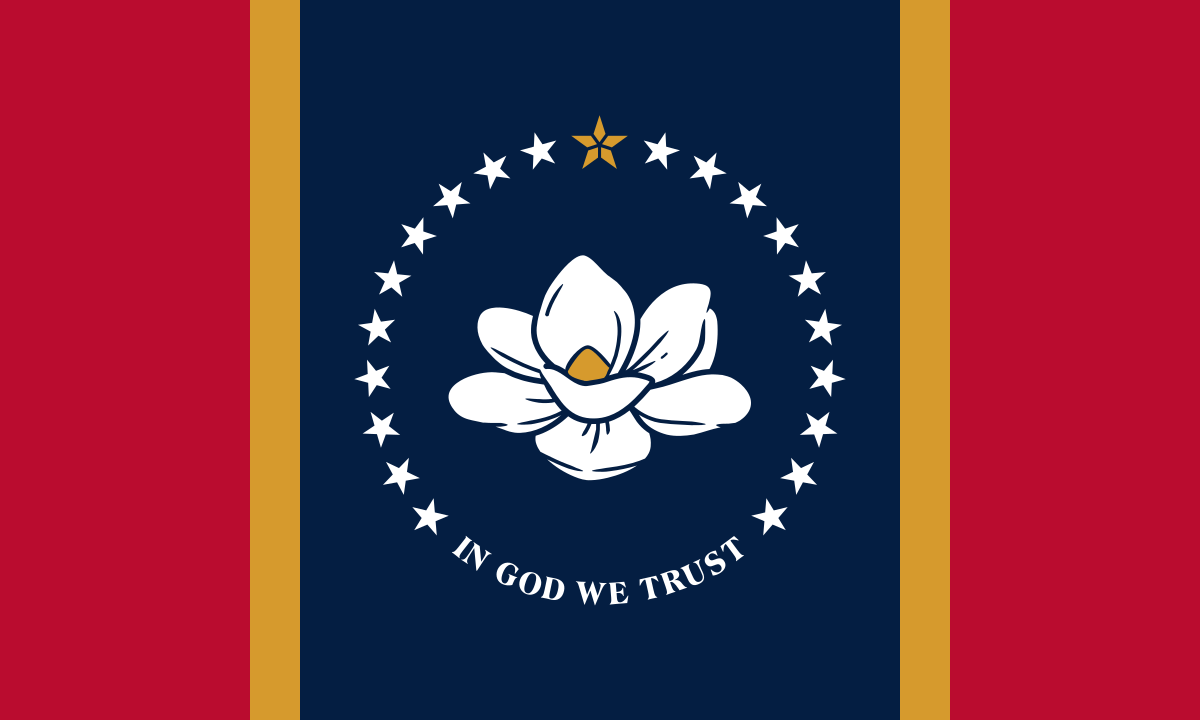United States of Plants
State Flags and Plant Symbols
Flags are important symbols to identify a place or group of people. They can be abstract with shapes and colors or have important images and symbols. In exploration of plants in culture, we are exploring the use of plants on state flags of the United States. Some botanicals are specific plants while others are general types. Pine trees are featured on many flags, but are not specified what kind probably due to many species native to the area.
Of the 50 states, there are 27 states that feature a botanical symbol. This is a reflection of how plants at one time were interwoven in the culture of early statehood.
There are 9 states that have proudly placed the state’s flower or tree on their flag. Florida and South Carolina both include sabal palms (Sabal palmetto) on their flags. Florida has two sabal palms and South Carolina has a solitary palmetto tree. This palm is native to the southeastern coast of the United States. These cold hardy palms are hurricane resistant and tolerant to salt spray, making them perfect to represent these coastal states.
Minnesota features several Showy Lady’s Slipper flowers (Cypripedium reginae) as well as a few pine trees (Pinus spp.). Showy Lady’s Slippers are members of the orchid family and are becoming rare due to habitat loss and are protected in Minnesota. These beauties however cause skin rashes similar to poison ivy, so another reason not to touch them.
Idaho has a pine tree as well with wheat bunches, but includes syringa flowers (Philadelphus lewisii). The species name gives a nod to Meriwether Lewis (as in the Lewis and Clark expedition) who first discovered the plant during their exploration of the Louisiana Purchase.
A sunflower (Helianthus spp.) adorns the Kansas flag. While it is not stated specifically which sunflower is on the flag, it is most likely the common sunflower (Helianthus annuus). This plant has many uses including the edible and tasty seeds and for making sunflower oil.
Kentucky has its state seal surrounded with two flowering goldenrod branches (Solidago canadensis). Goldenrods often get confused with ragweed (Ambrosia spp.) which is one of causes of seasonal allergies. Goldenrods are common fall blooming flowers and some are fragrant.
Nevada features its native Sagebrush (Artemisia tridentata) on the state flag. This sagebrush is very fragrant and has many medicinal uses. While sagebrush is related to wormwood (Artemisia absinthium) the botanical used in the anise flavored spirit absinthe, it does not have the green fairy or the same effects as wormwood.
The Utah state flag has Sego lilies (Calochortus nuttallii) on the flag. Native Americans showed Mormon pioneers to eat this lily’s bulbs to help them survive in the Utah environment.
The flag of West Virginia has several Great Laurel branches (Rhododendron maximum) on it. This botanical is native to the Appalachian Mountain area. While it is cold hardy, the leaves curl up when the temperature drops below 25°F to help conserve water and will uncurl when it warms back up.
Virginia on the other hand, has Virginia Creeper (Parthenocissus quinquefolia) vines with red and green leaves. These vines are the infamous ‘ivy’ growing on the walls of Ivy League schools.
Recently the state of Mississippi appropriately adopted a new state flag which prominently features the state flower, the magnolia (Magnolia grandiflora), and their state motto. These trees are native to the southeastern United States.
Illinois, Michigan, Montana, and South Dakota all have plants on the flag, but it is not labeled as to what specific plants they are. (If you are from one of these states or just know a lot about flags, let APC know and we will update this post!)
There are many state flags which feature plants of agricultural and economic importance to that state. Some states also include botanicals that symbolize abstract concepts such as olive (Olea spp.) and laurel (Laurus nobilis) branches representing peace and victory.
North Dakota and Oklahoma both have olive branches representing peace. Nebraska features wheat (Triticum aestivum) on the flag. Americans do love their bread, so wheat is naturally a commodity in the U.S. The New Jersey flag showcases apples (Malus spp.), plums (Prunus spp.) and grapes (Vitis spp.) surrounded by leaves in a cornucopia. The flag also includes wheat spears. This is a nod to the state motto as the Garden State. Wisconsin has a cornucopia of fruits as well, which look like apples, pears (Pyrus spp.), and grapes.
Pennsylvania features wheat, an olive branch and a cornstalk (Zea mays) on their state flag. The olive branch and cornstalk are symbols of peace and prosperity. Vermont and Oregon include each a pine tree and wheat on their state flags. Delaware has corn and wheat in the shield on the flag.
Connecticut has more of a story to the botanicals on their flag. There are 3 grapevines on the flag with three bunches of grapes. Grapevines are featured on the flag to represent the grape plants that were brought over when the state was colonized and to the reference Psalms 80 in the Bible. The three bunches of grapes on each grapevine are thought by some to represent the three oldest settlements in the state: Windsor, Harford and Wethersfield. Grapes are symbolic of good luck, felicity, and peace. The flag also features a white shield with white oak leaves (Quercus alba) bearing acorns on the border.
Maine has a pine tree on their state flag. New Hampshire has laurel branches on flag symbolizing victory. This goes well with their state motto of live free or die.
This is just about flags in the United States, what plants are found on other country’s flags? Or other flags in general? Leave us a comment!
##StateFlowers #FlagsofUnitedStates #EndPlantBlindness #USFlags #UnitedStatesofPlants #PlantsAsSymbols #AllPlantsConsideredBlog #PlantsEverywhere #FloridaFlag #SouthCarolinaFlag #MinnesotaFlag #IdahoFlag #KansasFlag #KentuckyFlag #NevadaFlag #UtahFlag #WestVirginiaFlag #VirginiaFlag #MississippiFlag #NewMississippiFlag #IllinoisFlag #MichiganFlag #MontanaFlag #SouthDakotaFlag #NorthDakotaFlag #OklahomaFlag #NebraskaFlag #NewJerseyFlag #WisconsinFlag #PennsylvainaFlag #VermontFlag #OregonFlag #DelewareFlag #ConnecticutFlag #MaineFlag #NewHampshireFlag #PlantCulture #EverydayPlants #StatePlants















